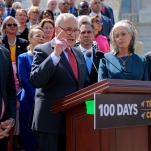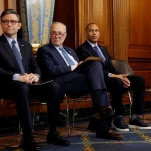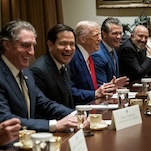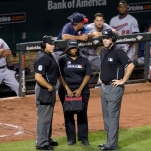The Supreme Court Could Restore Millions of Acres in Tribal Lands in an Oklahoma Murder Case
With a little help from their lawyers and the Supreme Court, the Muscogee Tribe in Oklahoma is getting very close to taking back its land.
On Tuesday, the Court will hear Carpenter v. Murphy. The case involves a 2000 murder case in which Patrick Murphy was convicted of killing and mutilating George Jacobs, who had previously been in a relationship with Murphy’s girlfriend. Both Murphy and Jacobs were enrolled members of the Muscogee Tribe, also known as the Creek or Creek Nation. Murphy was tried and convicted in McIntosh County, OK, and the verdict was upheld through multiple lower court appeals. The case coming before the Supreme Court isn’t so much about the murder, though, as it is about the land upon which the murder and the dumping of the body occurred.
In 1866, the federal government signed a treaty with the Muscogee dictating where the tribe’s reservation boundaries would be located—after a portion of the tribe broke off and supported the Confederacy during the Civil War, the treaty was drawn up to bring both sides of the Creek Nation under one document again. The treaty called for a clean slate between tribal members and the government; it also set the boundaries for what would be considered Muscogee land, covering roughly 3.25 million acres.
Now, if you paid attention at all during history class (assuming U.S. schools even teach this next part), you know this didn’t last long. The federal government convened the Dawes Commission in the 1890s, which worked through a process known as allotment to reclaim the land it agreed to allow the Creek Nation and the other Five Tribes (the Cherokee, Chickasaw, Choctaw, and Seminole).
-

-

-

-

-

-

-

-

-

-

-

-

-

-

-

-

-

-

-

-

-

-

-

-

-

-

-

-

-

-

-

-

-

-

-

-

-

-

-

-

-

-

-

-

-

-

-

-

-

-

-

-

-

-

-

-

-

-

-

-

-

-

-

-

-

-

-

-

-

-

-

-

-

-

-

-

-

-

-

-

-

-

-

-

-

-

-

-

-

-

-

-

-

-

-

-

-

-

-

-

-

-

-

-

-

-

-

-












































































































